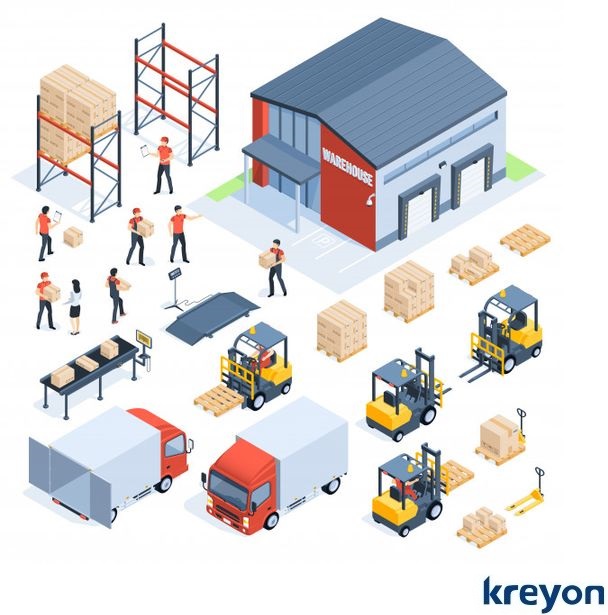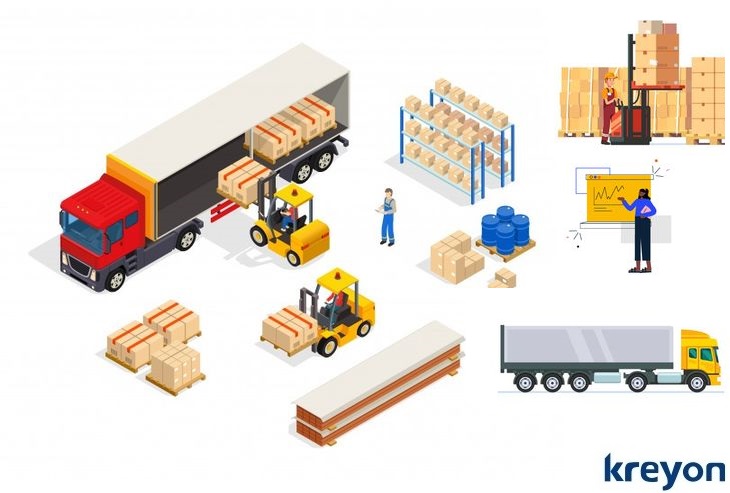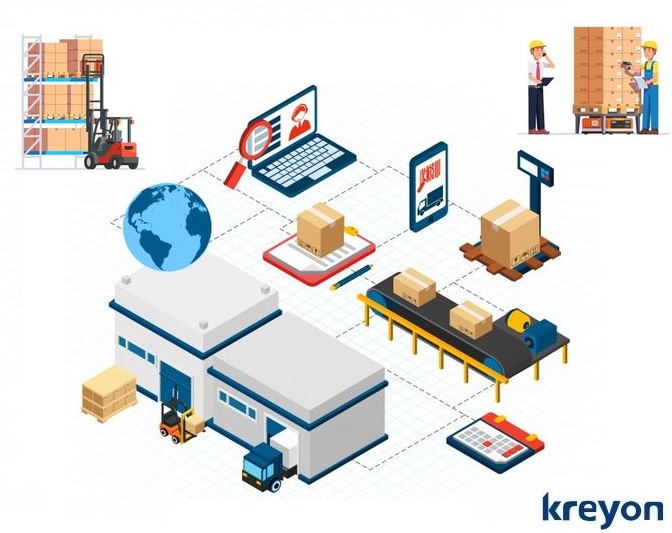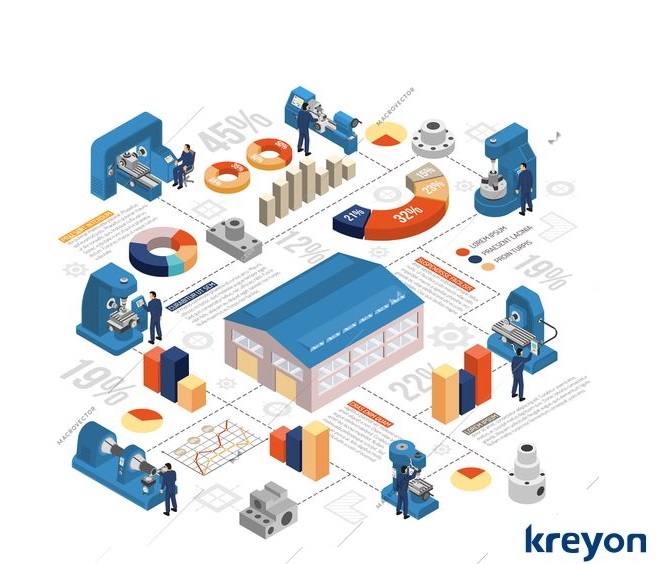Warehouse Management Software: The Essential KPIs for Warehouse Management

Warehouse management software has far reaching implications for managing supply chain and operations for businesses today than ever before. The growing push for improving operational efficiency, warehouse space utilisation and inventory carrying costs can have a significant impact on the bottom line for businesses.
Warehouse management software can help companies eliminate inefficiencies, improve accuracy, delivery and order tracking capabilities. It can help organisations forecast demands and improve logistics using technology driven warehousing. Here’s a look at some of the KPIs that can help retailers and companies with supply chain and warehousing:
1. Inventory Carrying Costs
The inventory carrying costs are a good indicator for optimising the efficiency of an organisation. Typically, high inventory carrying costs can be costly for an organisation’s bottom line. Warehouses that have high inventory carrying costs indicate inefficient operations. A carrying cost of over 30% can be considered high for inventory.
This is how the inventory carrying costs are computed:
Carrying cost (%) = Inventory holding sum / Total value of inventory x 100
Inventory holding sum = inventory service + capital cost + storage space cost + inventory risk
Say, if your inventory cost is $1M. The Inventory service= $25,000, capital cost=$60,000
Storage cost=$100,000 and inventory risk= $65,000
So, inventory carrying cost = ($25,000+ $60,000 + $100,000 + $65,000)/$1,000,000 X 100= 25%
A high inventory carrying cost results in upfront capital expenses for companies. Apart from that it also incurs high maintenance expenses, which results in increased expenses and cash flow problems. Most industries have an acceptable inventory carrying costs ranging from 15-30%. As retailers are adopting demand driven inventory models, they are looking at software solutions for forecasting customer orders and managing their supply chain.
2. Productivity & Turnover

Warehouse management requires tracking the space costs and making best use of available capital for companies.
Turnover = The Cost of Total Goods Sold During a Period / Average Inventory Value X 100
The turnover of items shows the consumption trends. A low turnover of items can indicate high warehouse maintenance expenses. At the same time, when turnover is very high, it can lead to shipping orders late for customers due to unavailability of items.
A good warehouse management software tracks and predicts the demand for the items. A survey by Peoplevox shows 34% of businesses have shipped an order late because they sold a product that was not in stock.
The warehouse management system needs to track the average time taken to dispatch and deliver customer orders too. Delay in delivery is akin to losing customers.
3. Item Accuracy
One of the most common problems faced by retailers is the difference between physical and online inventories. The warehouse with a realtime mapping of received items from purchases, shipped orders for customers and missing items leads to accurate costs.
Accuracy = Software Inventory / Physical Inventory) x 100
The top warehouse management systems automate the process of receiving and shipping orders with QR/Bar coded labels. Inventory accuracy of 100% is highly desirable for retailers. The warehouse management system can impose checks and balances with automation using RFIDs etc. to reduce thefts and missing items.
4. Time for Receiving/Dispatching Items

The warehouse space management requires careful distribution of items. The racks and spaces which can be most easily accessed are occupied by frequently used items. Organisations track the total number of received in a given time period and also the dispatched goods in the same period.
These metrics are helpful in reducing the average time taken to deliver and receive items in the warehouse. Whether it is robots or humans, warehouse management systems are built to rearrange warehouses for efficiency.
Average Time for Items = Total Time for Items(received or dispatched) / Total Time
The warehouse space and racks are redesigned for faster check ins and checkouts of items using algorithms and machine learning. The data is collected and patterns are analysed to improve the warehouse logistics dynamically.
5. Dispatch Accuracy & Returns Management
The dispatch of the right items to the right customers at the right time exemplifies sound supply chain management. When warehouses are managed using technology, your company can track the dispatch accuracy of orders shipped to customers and manage the returns from customers. The dispatch accuracy can increase costs for a company. If items are damaged or wrong items are shipped to the customers, it increases the complexities and costs for a business.
Dispatch Accuracy = (Total Number of Orders – Incorrect Item Returns)/total number of orders) x 100
Using automation for warehouse and inventory can improve dispatch accuracy for an organisation considerably. When the dispatch accuracy is high, it increases customer satisfaction, brand reputation and reduces expenses for companies.
6. Backorder Rate

The backorder rate is the measure of orders that could not be supplied by a company to its customers immediately. The backorder rate shows a lagging inventory system that is not keeping track of the customer orders and unable to predict the demand accurately. A sudden seasonal spike or changes in prevailing situations can trigger high backorder rates.
Backorder Rate = (Unfulfilled orders at the time of purchase) / (Total number of orders) X 100
An increasing backorder rate leads to customer dissatisfaction. Organisations tend to typically guard against backorder rates with proactive demand forecasting and warehouse analytics. A study revealed that 64% of retailers were challenged to adapt their supply chain for ecommerce.
7. Space Efficiency & Costs
Global retailers and businesses are looking at their warehouse space efficiencies. It is one of the ways technology is assisting companies to reduce their capital and operational expenses. The technology driven warehouses are space optimised, better equipped to deal with demand forecasting and lower carrying costs.
The warehouse space is organised to cut down on storing items that move slowly. Fast moving items are tracked and spaced for quicker checkouts leading to improved space utilisation. There is a case for moving towards the smaller warehouses for achieving higher efficiency, delivery accuracy and productivity for organisations.
Space Efficiency = (Used Space in the Warehouse)/(Total Space in the Warehouse) X 100
Say, If you have 450,000 cubic feet of product in your 1,485,000 cubic foot warehouse, you have 30.30% utilization. Space utilisation of less than 50% at all times is a clear indication of unnecessary maintenance and service costs that companies can do away with.
Kreyon Systems has great expertise in warehouse management software. The solutions are geared for improved productivity, inventory accuracy, regulatory compliance and reliability. If you need any assistance or have queries for us, please get in touch.
